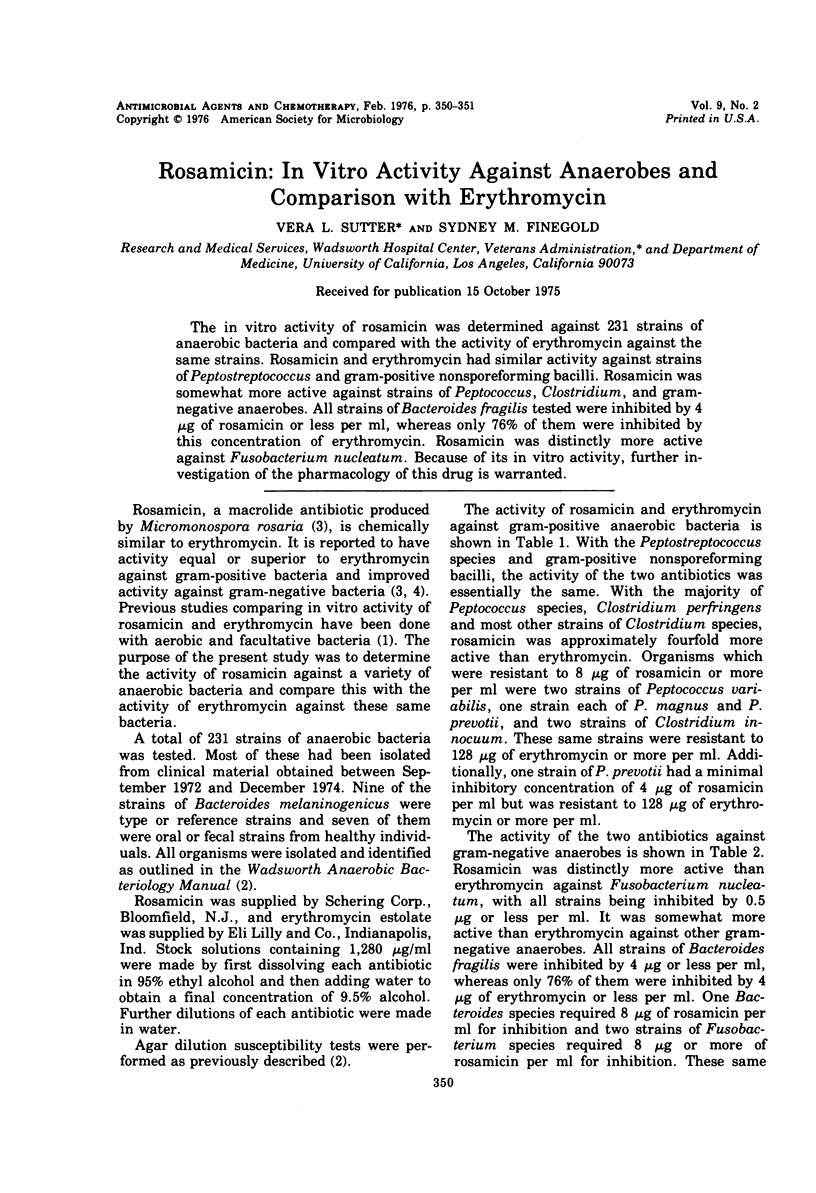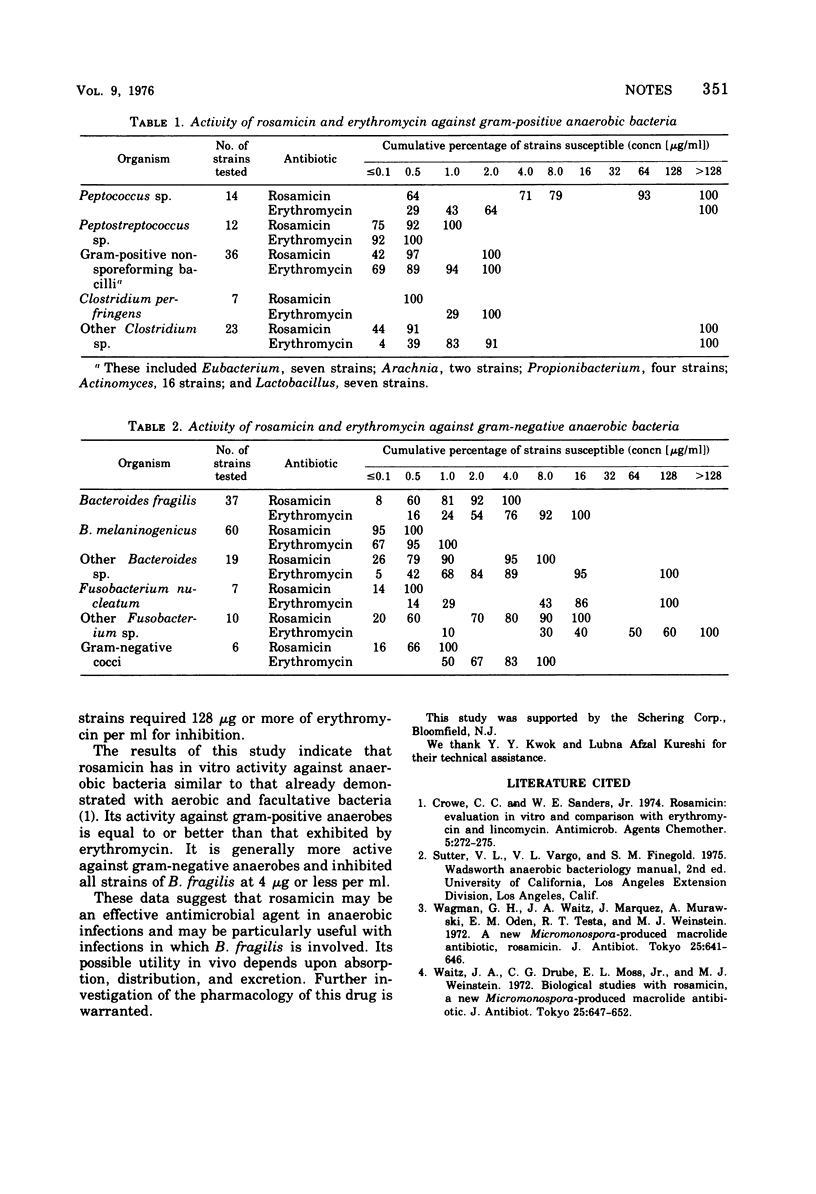Abstract
The in vitro activity of rosamicin was determined against 231 strains of anaerobic bacteria and compared with the activity of erythromycin against the same strains. Rosamicin and erythromycin had similar activity against strains of Peptostreptococcus and gram-positive nonsporeforming bacilli. Rosamicin was somewhat more active against strains of Peptococcus, Clostridium, and gram-negative anaerobes. All strains of Bacteroides fragilis tested were inhibited by 4 μg of rosamicin or less per ml, whereas only 76% of them were inhibited by this concentration of erythromycin. Rosamicin was distinctly more active against Fusobacterium nucleatum. Because of its in vitro activity, further investigation of the pharmacology of this drug is warranted.
Full text
PDF

Selected References
These references are in PubMed. This may not be the complete list of references from this article.
- Crowe C. C., Sanders W. E., Jr Rosamicin: evaluation in vitro and comparison with erythromycin and lincomycin. Antimicrob Agents Chemother. 1974 Mar;5(3):272–275. doi: 10.1128/aac.5.3.272. [DOI] [PMC free article] [PubMed] [Google Scholar]
- Wagman G. H., Waitz J. A., Marquez J., Murawaski A., Oden E. M., Testa R. T., Weinstein M. J. A new Micromonospora-produced macrolide antibiotic, rosamicin. J Antibiot (Tokyo) 1972 Nov;25(11):641–646. doi: 10.7164/antibiotics.25.641. [DOI] [PubMed] [Google Scholar]
- Waitz J. A., Drube C. G., Moss E. L., Jr, Weinstein M. J. Biological studies with rosamicin, a new Micromonospora-produced macrolide antibiotic. J Antibiot (Tokyo) 1972 Nov;25(11):647–652. doi: 10.7164/antibiotics.25.647. [DOI] [PubMed] [Google Scholar]


